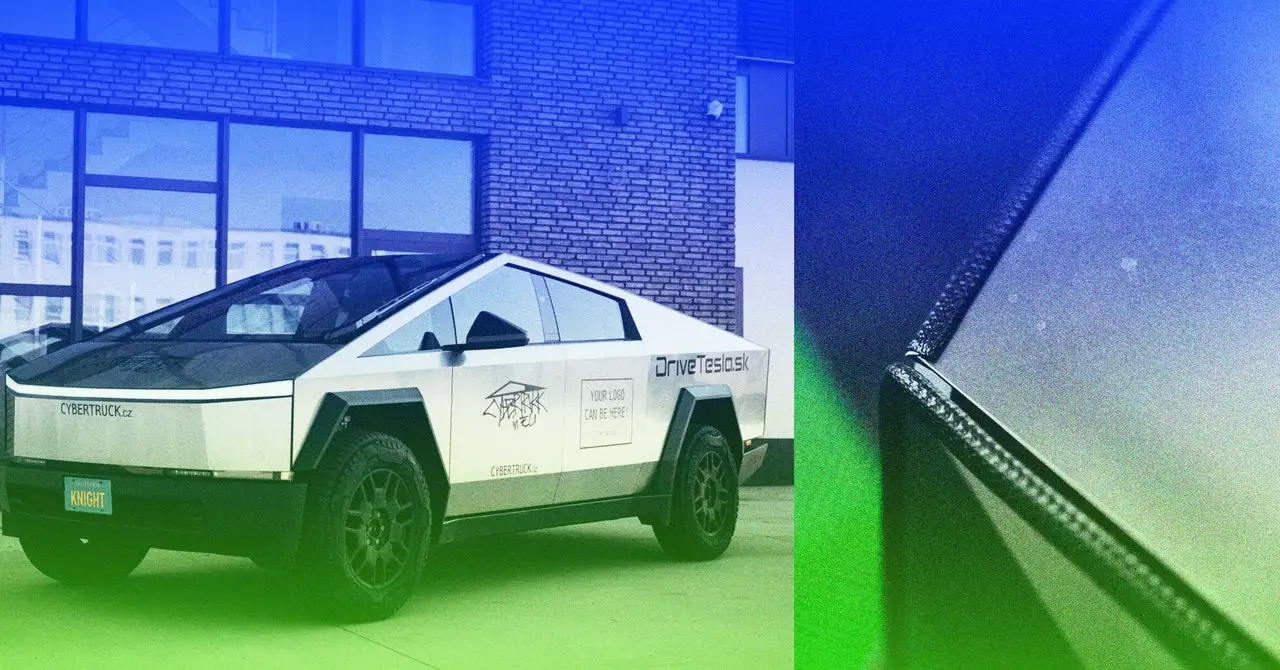The Tesla Cybertruck has sparked considerable interest since its inception, blending futuristic aesthetics with robust performance capabilities. However, as it makes its way into European markets, a myriad of regulatory and safety challenges threatens to overshadow its appeal. Central to these concerns are issues surrounding pedestrian safety, vehicle classification, and the implications of its unique design on European roads.
A critical aspect of the Cybertruck’s design is its hood, which would need to be flexible and devoid of protrusions to enhance pedestrian safety. Industry experts like Avery have highlighted that elements such as the truck’s large wiper system could pose risks to pedestrians in the event of a collision. This attention to detail is essential as Europe has stringent vehicle safety regulations designed to protect vulnerable road users, including pedestrians and cyclists.
While Tesla’s innovative design may appeal to tech-savvy consumers, if it fails to meet the necessary safety standards, it may not achieve a favorable score from the Euro NCAP, the European New Car Assessment Programme. Such ratings play an integral role in consumer purchasing decisions, making the implications of the design all the more crucial.
The vehicle’s registration issues in the Czech Republic exemplify the quirks of adapting the Cybertruck to European regulations. Initially registered under the unique Individual Vehicle Approval system, the Cybertruck became entangled in complications concerning its classification as a vehicle in the N1 category. According to established EU laws, vehicles in this category must adhere to specific weight ratios, determined by formulas implemented in regulations from 2018.
The revelation that the Cybertruck does not comply with these necessary calculations when carrying four passengers raises questions about its legality on European roads. To operate the vehicle legally in Europe, buyers would need a category C license, signifying permission to drive trucks exceeding a gross vehicle weight rating (GVWR) of 3.5 metric tons, which poses additional barriers for consumers eager to own this high-tech vehicle.
The cofounder of Cybertruck.cz, Norton Slovak, acknowledged the discrepancies between the Cybertruck’s weight and the regulatory requirements, asserting that local interpretations of the rules might create ambiguities in enforcement. The Czech transport ministry seems unconcerned, emphasizing that individual approval pertains solely to the Czech Republic and does not extend to EU-wide type approval. This localized approval approach creates gray areas that could lead to inconsistent regulatory scenarios across different EU member states, posing potential risks for compliance and safety standards.
Despite these unfolding legalities, the Cybertruck has already ventured beyond Czech borders to other EU countries, generating excitement while also amplifying regulatory scrutiny. In Slovakia, the vehicle’s first operational test in “Wade Mode” culminated in a less-than-stellar demonstration, with the truck getting stuck in a lake and requiring assistance from bystanders. Such incidents only amplify concerns about whether the Cybertruck’s all-terrain capabilities are suited for European infrastructure and weather conditions.
The overarching concern arises from a letter penned by various transport NGOs, warning that without decisive action by the European Commission, the registration of a single Cybertruck could pave the way for mass importation of this vehicle model into Europe. The organizations claim this influx might jeopardize public safety, adversely affecting pedestrians, cyclists, and individuals in vehicles lacking similar protective features.
As the world becomes increasingly focused on the balance between innovation and safety, stakeholders—including Tesla, regulatory authorities, and advocacy groups—must collaborate to address these mounting challenges. It is evident that while the Cybertruck may be an engineering marvel, its introduction into the European market requires careful navigation of regulatory frameworks aimed at ensuring public safety. As this narrative unfolds, the outcome will likely influence the future of electric and innovative vehicle designs across the continent.
The Tesla Cybertruck symbolizes both a leap in automotive technology and a test of European regulatory frameworks. This collision of advancement and regulation highlights the complexities inherent in introducing cutting-edge vehicles into established markets, indicating that innovation must always coexist with safety and compliance. As stakeholders confront these challenges, the need for nuanced, informed dialogue becomes paramount to achieve successful integration of the Cybertruck into European society.

